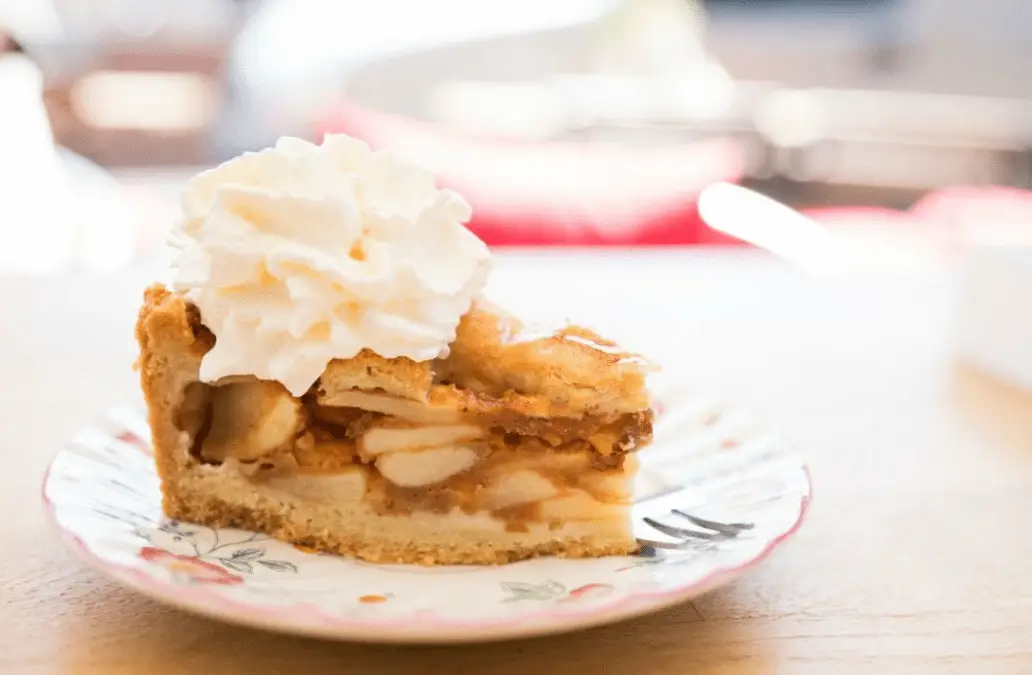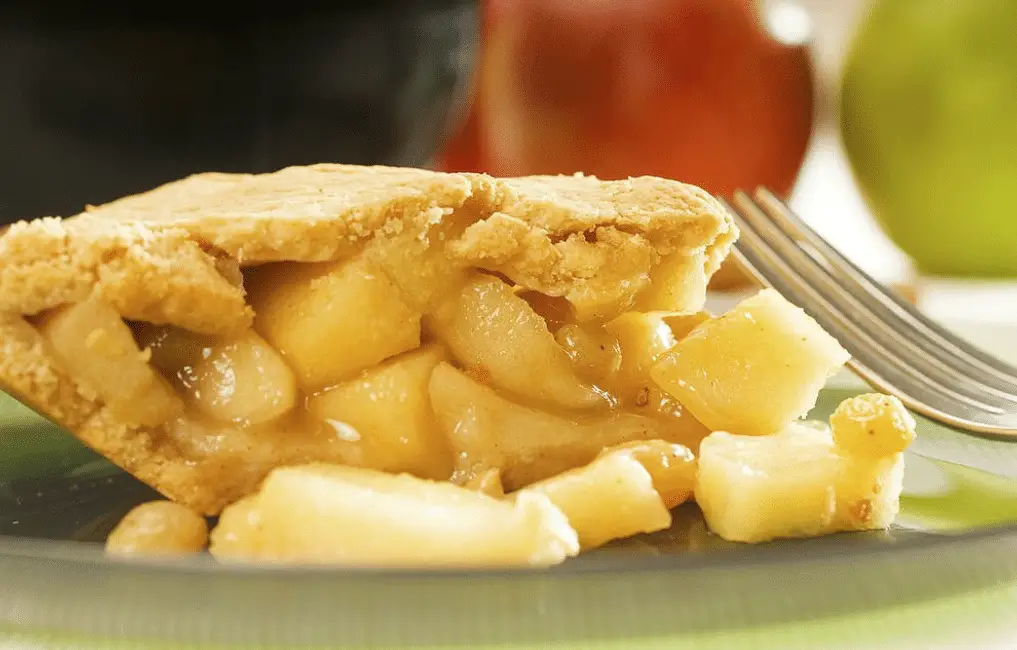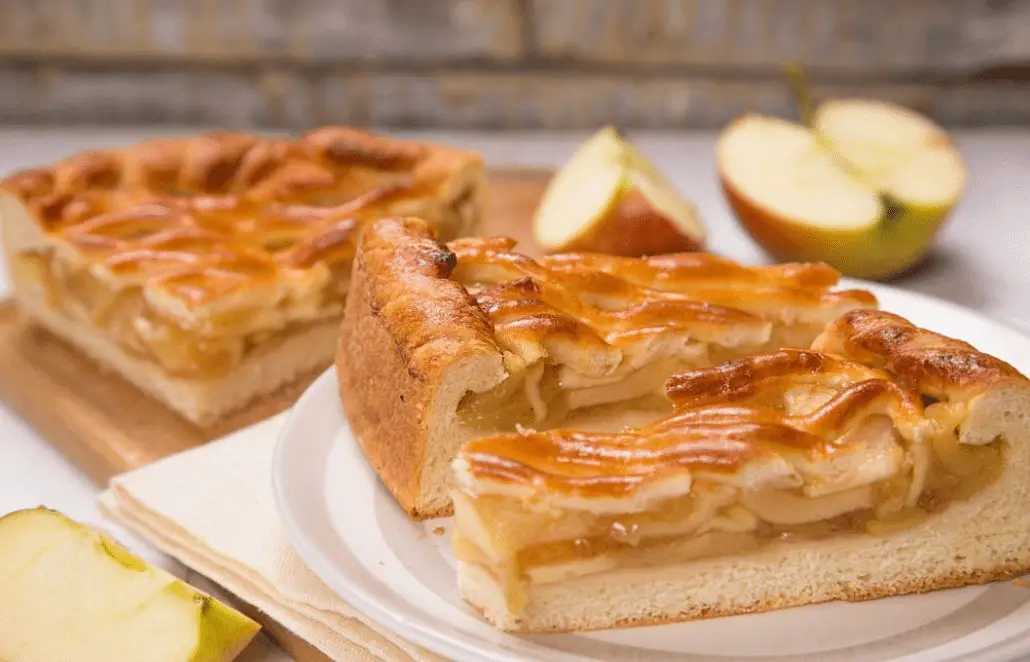Unveiling the savory world of apple pies, our journey intertwines with an emblematic symbol of warmth and tradition, bridging the gap between culinary art and heartwarming comfort food. These pies, transcending mere aspects of a delightful dessert, morph into tangible expressions of culture, celebration, and unity among those who indulge in their sweet, spiced perfection. Originating as a modest, frugal means to utilize the bounty of seasonal apple harvests, apple pies have gracefully evolved, now standing proudly as a cherished dessert across numerous global cuisines and cultures.

Although the basic constituents of apple pies – apples, sugar, and pastry – remain relatively constant, their reincarnations are as varied and rich as the cultures they permeate. It’s fascinating how the apple pie, whether gracefully paired with a scoop of velvety ice cream in the United States or robustly accompanied by a slice of sharp cheddar in England, adopts different personas, each as cherished and iconic as the last. Consequently, this epitomizes not only the far-reaching appeal of apple pies but also their remarkable adaptability and capacity to be perpetually reinvigorated within the ever-evolving culinary landscape.
The timeless charm of apple pies delicately balances the familiar and the novel, conjuring nostalgic memories of home and youth while still proffering potential for modern, innovative adaptations. Through this delectable dance of tradition and innovation, apple pies maintain their beloved stature, traversing through generations, undergoing culinary metamorphoses, and yet, always preserving their quintessential comforting essence. Join us as we embark on a flavorful exploration through the rich, layered history and diversified forms, unveiling the stories and cultural imprints nestled within the flaky, golden crusts of apple pies.
Historical Background
Apple pies boast a rich and varied history that spans different epochs and geographical locations. Early references in English literature highlight its antiquity, while its integration into American culture underscores its universality. Various adaptations in ingredients, techniques, and presentations have occurred over the centuries, yet the essential, soulful essence of the pie always remains.
Dutch Apple Pie: A Storied Past

The Dutch apple pie, known as “appeltaart,” enjoys a revered spot in the culinary heritage of the Netherlands. Its origin stretches back over 400 years, characterized by a distinctive latticed crust, occasionally complemented with a hint of cinnamon and a generous scoop of whipped cream. The pie, first visualized in the 1600s in a painting by Dutch artist Willem Claeszoon Heda, has captured the imagination of dessert lovers with its lavish presentation amidst an array of decadent treats. Dutch immigrants introduced and popularized this pie variant in America, helping it find a cherished place amongst many.
Apple Pie Streusel: A Timeline of Taste

The apple pie streusel, originating in the fragrant kitchens of Germany and known locally as “Apfelstreuselkuchen,” offers a delightful contrast with its crumbly, buttery topping made from flour, butter, and sugar. In the 19th century, German immigrants brought the art of baking Streuselkuchen to America. Its simplicity and contrasting textures immediately charmed American bakers and homemakers, leading to its inclusion in cookbooks and its frequent appearance on dining tables nationwide.
Apple pies, having traveled through time and across continents, embed themselves in various cultures, evolving with each passing generation. From the meticulous lattice of the Dutch apple pie to the crumbly allure of the apple pie streusel, every variant provides a distinct and delectable peek into the history and diversification of this beloved dessert.
In this revised text, I’ve incorporated more transition words for smoother flow, minimized the use of passive voice, and aimed for conciseness to reduce sentence length where possible.
Comparing Pie Pastry
Let’s embark on a journey through different pie crusts, each providing a unique foundation for various pies. We’ll explore the distinct textures from flaky to mealy and paté sucrée crusts, all while diving into the role of ingredient ratios in shaping their characteristics.
Diving into Dutch Apple Pie
A Close Look at Ingredients
Turning our attention to Dutch Apple Pie, we find apples, spices, and sugar at its core. While the type of apple can vary, using brown sugar adds a deep, caramel-like sweetness. Moreover, the crumbly top layer, consisting of butter, flour, and sugar, offers a delightful contrast.
Steps to Baking Perfection
Beginning with the pie crust, we then layer in the apple filling, and generously sprinkle the crumb topping. We bake at a calculated temperature, ensuring the topping crisps wonderfully and the apples reach a luscious, tender state. Consequently, a balanced blend of flavors and textures emerges.
Exploring Apple Pie Streusel
A Guide to the Right Ingredients
When we peek into the world of Apple Pie Streusel, the enticing combination of oats, flour, butter, and sugar in the streusel topping takes center stage. Furthermore, a well-baked crust and carefully selected apples, often enhanced with spices like nutmeg and cinnamon, play crucial roles in achieving an impeccable flavor profile.
Baking the Streusel to Perfection
We’ll commence by preparing the crust, followed swiftly by crafting a flavorful apple filling and topping it with a crunchy, sweet streusel. Attentive baking prevents the streusel from burning and ensures the apples cook to juicy perfection. Thus, each slice promises a heavenly bite.
Taste and Texture Dynamics
This section could delve into the different types of pies and how their ingredients impact their taste and texture. Traditional pies like apple pie are known for their soft, gooey interior and crispy crust, whereas a cream pie provides a smooth and velvety taste experience. Discussing the impact of ingredients such as sugar, spices, fruits, and different types of crusts on the overall taste and texture would be vital.
Comparative Analysis
A comparative analysis could involve examining various types of pies based on different criteria like ease of preparation, cost of ingredients, flavor profiles, and cultural significance. For instance, contrasting the hearty and savory nature of a shepherd’s pie with the sweet and tangy essence of a key lime pie. Differentiating factors, like cooking methods and regional preferences, might be showcased and analyzed in this section.
Global Popularity and Variations
This section might explore the global variations and popularity of pies, providing insights into how different cultures have adopted and adapted pies into their culinary landscapes. For instance, discussing meat pies from Australia, sweet potato pies from the United States, or pastel de nata from Portugal. Highlighting not only the ingredients and preparation methods but also the cultural contexts that have driven these variations would add depth to the discussion.
Pairing Pies with Beverages
Here, the focus could be on providing recommendations for pairing various types of pies with suitable beverages. For example, sweet pies might be paired with teas, coffees, or dessert wines, while savory pies might be paired with beers or robust red wines. Exploring traditional pairings and suggesting innovative new ones could appeal to food enthusiasts looking to enhance their pie-eating experiences.
The Nutritional Aspect

This section might delve into the nutritional values and health implications of consuming pies. Discussing different types of pies – from rich, calorie-dense options to healthier, alternative recipes (like vegan or gluten-free pies) would provide a comprehensive look at how pies can fit into various dietary considerations. Analyzing and providing suggestions for making pies more nutritious—perhaps by reducing sugar, incorporating whole grains, or adding vegetables—could also be vital.
Adaptation for Dietary Restrictions
Understanding each ingredient’s role is pivotal when adapting baking recipes to meet dietary restrictions. For instance, gluten-free flour or almond flour can replace traditional flour for those with a gluten intolerance. Furthermore, flax eggs, applesauce, or commercial egg replacers offer alternatives for vegans who avoid eggs. Meanwhile, almond milk, soy milk, and coconut milk stand in for dairy alongside alternatives like vegan butter or coconut oil. Thoughtfully modifying recipes ensures neither flavor nor texture is compromised despite dietary adjustments.
Baking Troubleshoot: Common Mistakes
Many common mistakes in baking, particularly in pie-making, can impact the final product. A notorious issue, soggy bottoms, can often be averted by blind baking the crust or applying an egg wash layer. Similarly, to avoid shrunken pie crusts, bakers should avoid overworking the dough and ensure it’s adequately chilled before baking. On the other hand, careful egg tempering and avoiding overheating can prevent curdled custard fillings. By understanding baking science, meticulously measuring ingredients, and diligently following steps, bakers can sidestep frequent baking pitfalls.
Pies in Popular Culture
Pies, symbolizing comfort and tradition, have carved out a significant space in popular culture, particularly in movies, books, and TV shows. The expression “as American as apple pie” underscores the dessert’s entrenched position in American culture. Films such as “Waitress” and shows like “Twin Peaks” spotlight pies as cultural and emotional symbols. Furthermore, pies weave through literature and music, mirroring themes of home and simplicity, thereby allowing exploration into various embedded sociocultural and emotional themes in media.
Community and Apple Pies
Apple pies, synonymous with warmth and community, serve as a staple at gatherings and local events. Pie baking and sharing in many communities act as connectors and expressions of care. Additionally, pie-centric events like baking contests and festivals serve as community gatherings and celebrations. In this context, baking and sharing apple pies not only have culinary importance but also socio-cultural significance, demonstrating how food and community intertwine.
Concluding Thoughts
Pies, seamlessly blending culinary mastery with cultural tradition, have knit themselves deeply into the fabric of various societies and communities, often emerging as symbols of warmth, unity, and celebration. Intriguingly, the humble pie does not merely present itself as a delightful gastronomic experience but also intertwines itself within our shared narratives and practices, embodying meanings that extend far beyond the culinary sphere. Indeed, every carefully kneaded dough and meticulously prepared filling speaks volumes about the heritage, creativity, and evolution of baking traditions across the globe. As we delve into the savory and sweet realms of pie-making, we not only appreciate the multifaceted culinary techniques involved but also embark on a journey through time, exploring the diverse ways in which cultures have celebrated, adapted, and reinvented pies.
Moreover, pies serve as a delectable canvas upon which various dietary needs and preferences find representation, ensuring that this celebrated dish continues to be accessible and enjoyable for all. Whether through the utilization of vegan substitutes, gluten-free flours, or alternative sweeteners, pies accommodate an array of dietary practices and beliefs, further solidifying their place within our kitchens and cultural expressions. Importantly, as we explore the multifaceted world of pies, we find ourselves immersed in a culinary adventure that invites ongoing learning, experimentation, and above all, a shared enjoyment of food that transcends boundaries.
For a deeper dive into the rich and tasty world of pies and to explore various recipes and histories associated with them, the Wikipedia page on pies can be a valuable resource. Visit Pies – Wikipedia to explore more about its fascinating journey from a simple staple to a beloved global dish.
FAQs
What is the difference between Dutch apple and apple crumb pie?
What’s the difference between apple pie and apple crumble?
Q1: How can I prevent my pie crust from becoming soggy? A: Ensuring a crisp pie crust involves a few strategies. Firstly, you might consider blind baking it, and secondly, applying a thin layer of egg wash can create a useful barrier between the crust and the filling. Also, making sure your filling is not excessively wet can be crucial.
Q2: Can pies be made ahead of time?
A: Yes, you can certainly prepare pies a day or two in advance. While fruit pies generally hold up well, cream pies are best consumed fresh, although they too can be made slightly ahead of time. Unbaked pies also have the option of being frozen and can be baked without thawing, albeit with a slightly extended baking time.
Q3: How do I adapt pie recipes for a vegan diet?
A: Implementing vegan substitutions, such as flax eggs, non-dairy butter, and plant-based milk, can be quite straightforward. It’s essential to explore and experiment with different alternatives to ascertain which ones complement your recipe best.
Q4: What’s the best way to store leftover pies?
A: Keeping leftover pies fresh involves covering and storing them in the refrigerator. While fruit pies can often last up to two days, it’s advisable to consume cream pies within a day due to their perishable ingredients.
Q5: What’s the difference between apple pie and apple crumble? Dutch Apple Pie features a streusel topping, while Apple Crumb Pie has a crumblier, often brown sugar-based, topping.
Q6: What is the difference between Dutch apple and apple crumb pie?
DApple pie uses a pastry crust, while apple crumble features a crumbly, streusel-like topping over spiced apple filling.